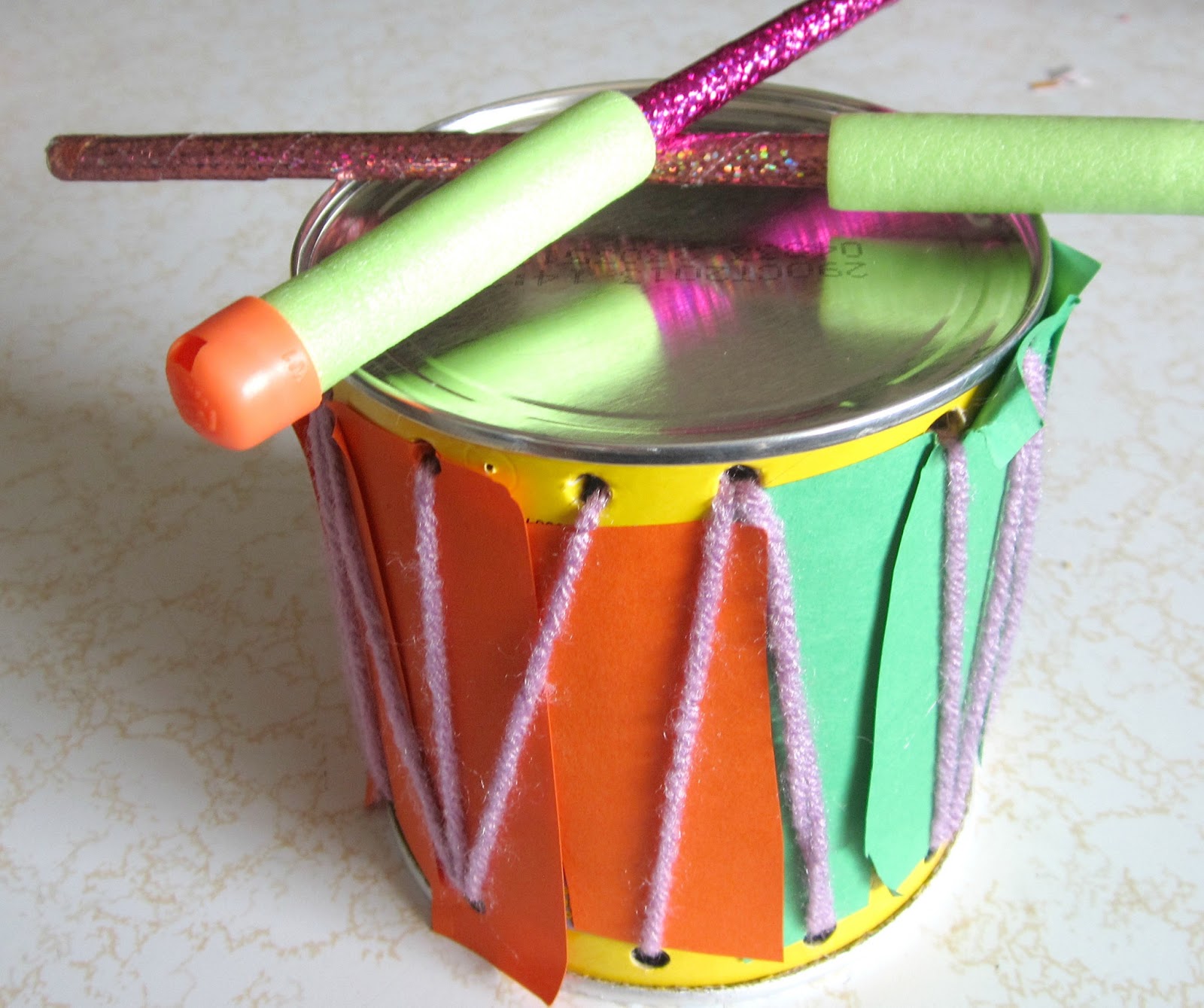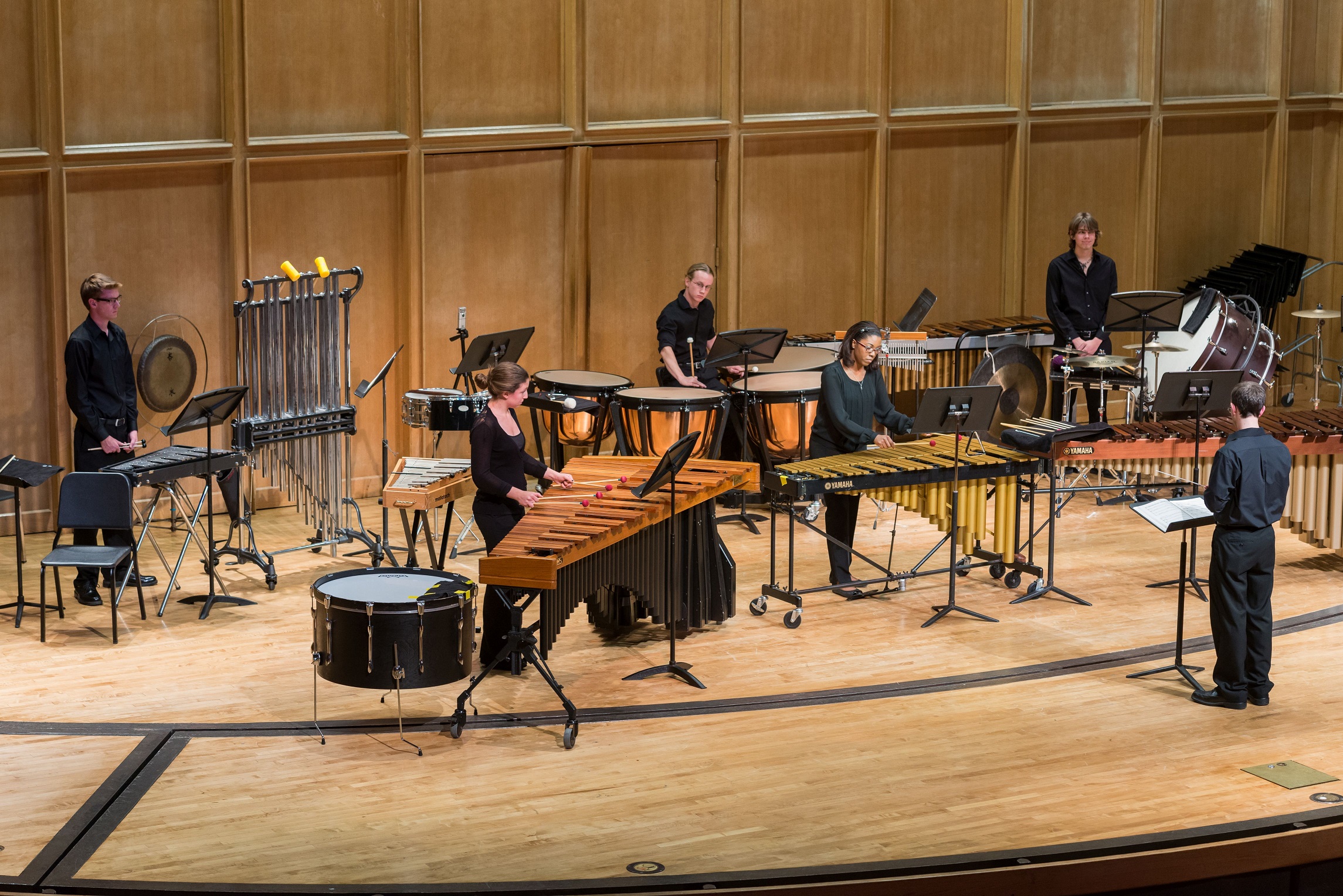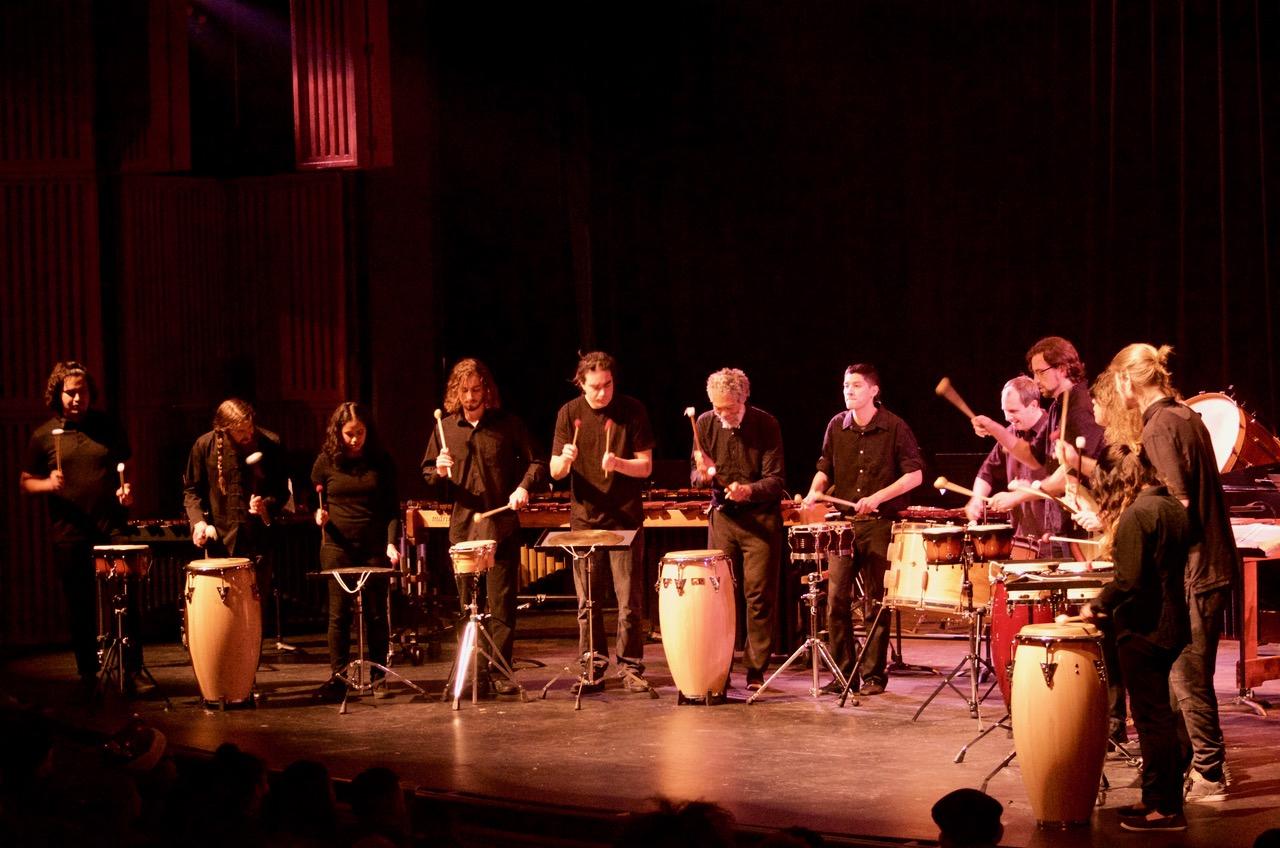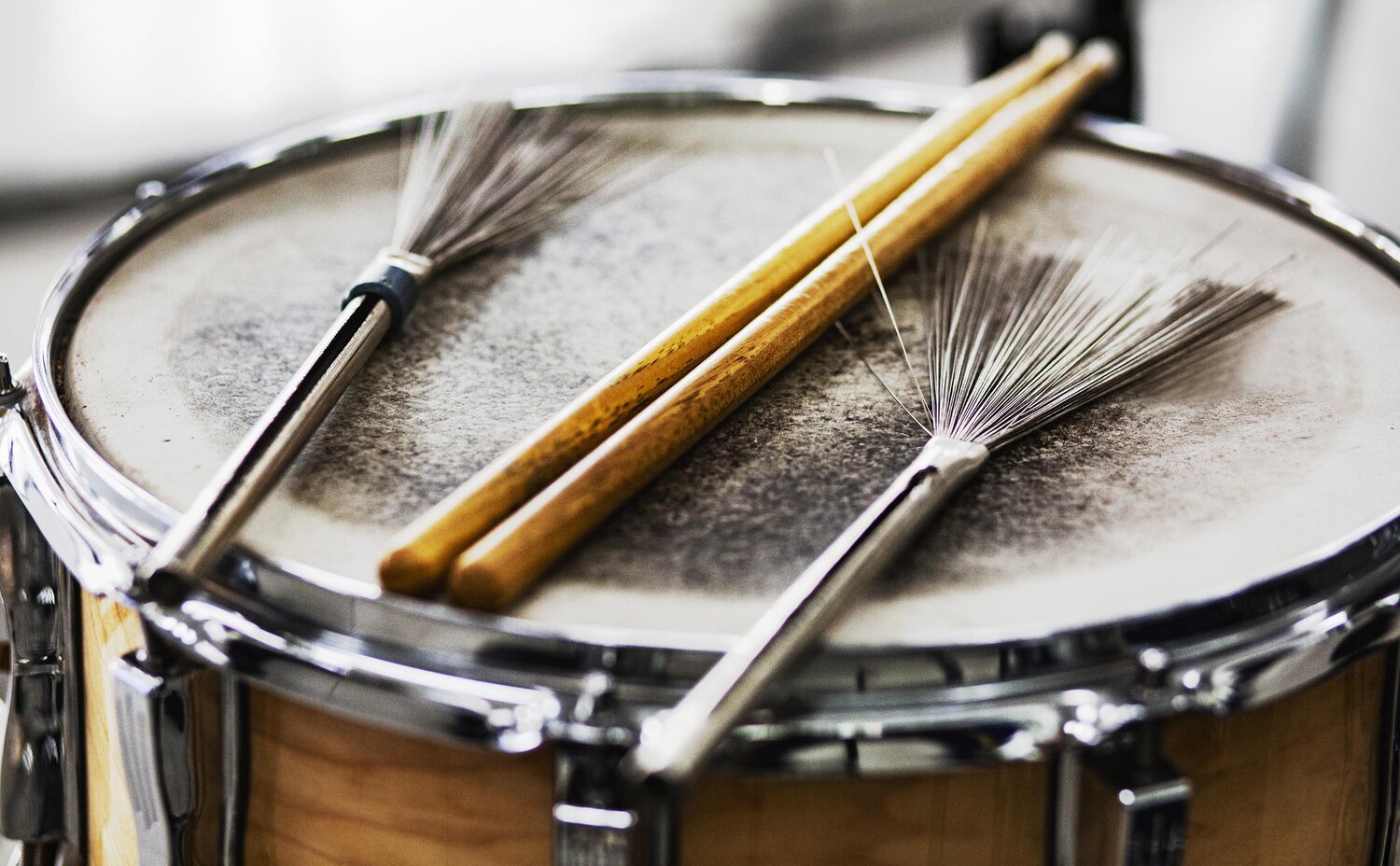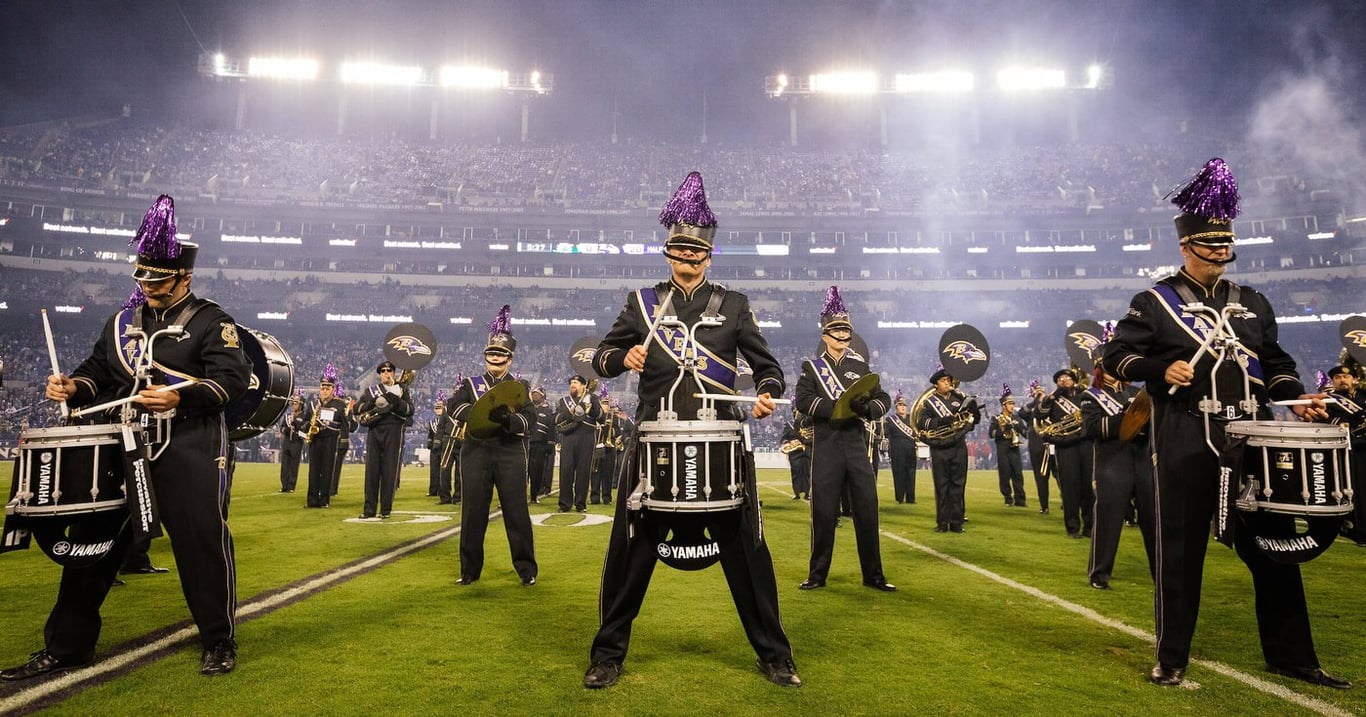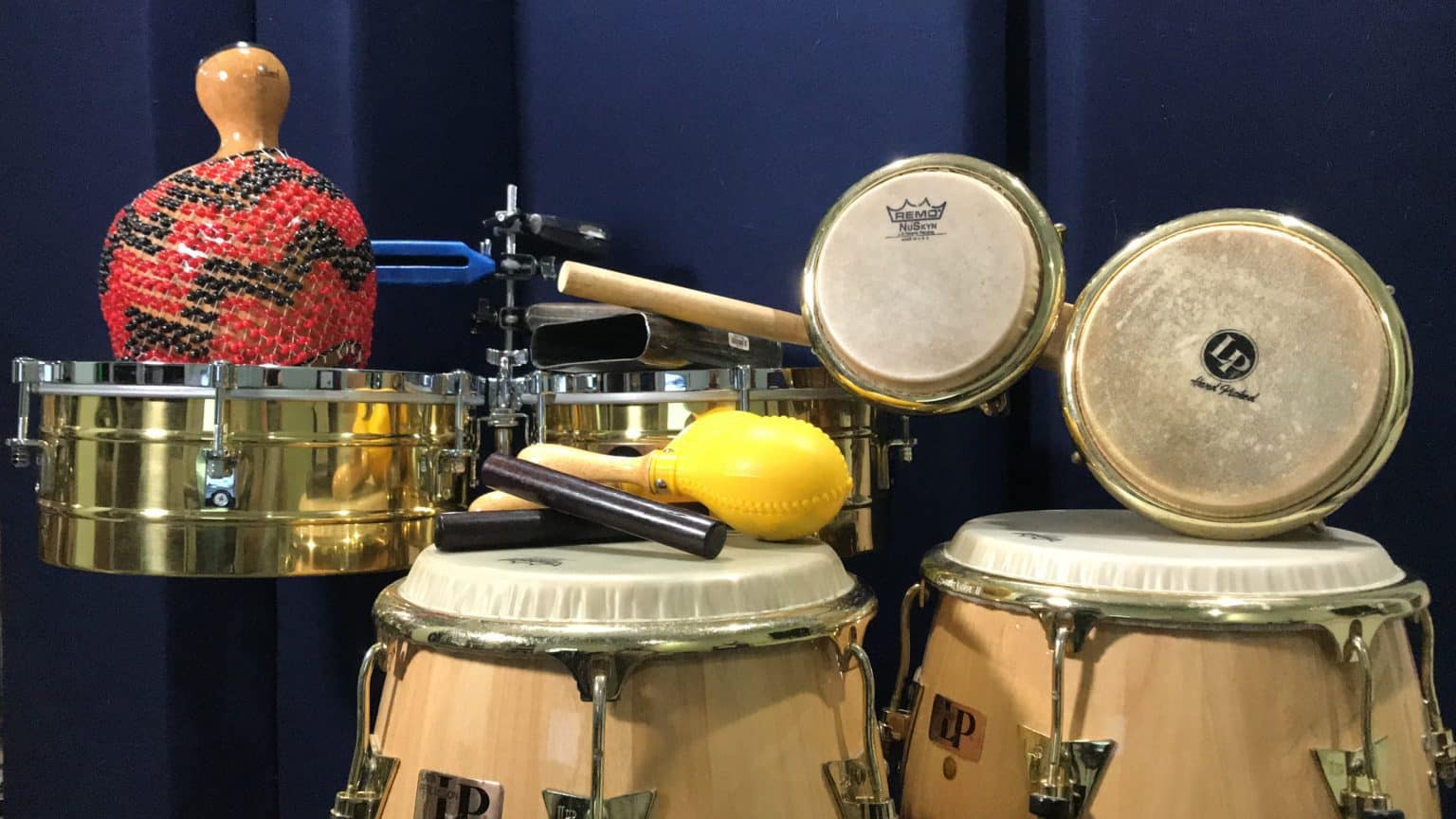Home>Instruments>Percussion Instruments>How To Play Percussion Instruments


Percussion Instruments
How To Play Percussion Instruments
Published: January 16, 2024
Learn how to play percussion instruments and master the art of rhythm with our comprehensive guide. Explore various percussion instruments and techniques to enhance your musical skills.
(Many of the links in this article redirect to a specific reviewed product. Your purchase of these products through affiliate links helps to generate commission for AudioLover.com, at no extra cost. Learn more)
Table of Contents
Introduction
Percussion instruments are an intrinsic part of the world of music, adding rhythm, texture, and energy to musical compositions. From the grand symphonies performed in concert halls to the lively beats of a street parade, percussion instruments can be found in various musical genres and cultural traditions. Whether you’re a beginner aspiring to learn or a seasoned musician, understanding the fundamentals of percussion instruments is essential to creating captivating rhythms.
With percussion instruments, sound is produced by striking, shaking, or scraping the instrument itself or its components. These instruments are classified into different categories based on their playing techniques and sounds they produce. There are three main types of percussion instruments: hand percussion instruments, mallet percussion instruments, and drum sets.
Hand percussion instruments, as the name suggests, are played by hand. They include instruments like congas, bongos, tambourines, and djembes. Mallet percussion instruments, on the other hand, are played by striking them with mallets or beaters. Common examples of mallet percussion instruments are xylophones, marimbas, and vibraphones. Finally, drum sets encompass a collection of drums and cymbals played together using sticks or pedals, creating a rhythmic foundation.
Learning how to play percussion instruments is not only about hitting things rhythmically; it requires precision, technique, and an understanding of music theory. Basic techniques such as proper hand posture, grip, and stroke execution are crucial for achieving optimal sound quality and preventing injuries. Moreover, becoming familiar with different rhythmic patterns, musical notation, and dynamics will help you communicate and collaborate effectively with other musicians.
In this guide, we will explore the various types of percussion instruments and delve into the basic techniques required to play them effectively. We will also touch upon the different components of a drum set and explore the exciting world of percussion ensembles. Additionally, we will provide tips for practicing and offer suggestions on how to enhance your skills as a percussionist. So grab your drumsticks, put on your tambourine, and let’s dive into the captivating universe of percussion instruments.
Types of Percussion Instruments
Percussion instruments come in a wide variety, each with its own unique characteristics and sound. Here are some of the main types of percussion instruments:
- Drums: Drums are an essential part of any percussion ensemble. They are typically made up of a cylindrical shell with a drumhead stretched across the top. The drumhead can be struck with hands, sticks, or mallets to produce sound. Common types of drums include bass drums, snare drums, and tom-toms.
- Cymbals: Cymbals are metal discs that produce a shimmering, ringing sound when struck together or hit with a drumstick. They come in various sizes and types, such as crash cymbals, ride cymbals, and hi-hat cymbals, each offering a distinct tonal quality.
- Xylophones: Xylophones are melodic percussion instruments that consist of wooden bars of varying lengths arranged in a specific order. When struck with mallets, they produce a bright and resonant sound. Xylophones are commonly used in orchestras, marching bands, and jazz ensembles.
- Marimbas: Marimbas are similar to xylophones but have larger and resonant wooden bars. They produce a rich and warm sound and are often used in solo performances and chamber music ensembles.
- Vibraphones: Vibraphones are percussive instruments that have metal bars with resonators underneath. When struck, the bars produce a mellow and vibrating sound. They are commonly used in jazz and popular music genres.
- Timpani: Timpani, also known as kettle drums, are large bowl-shaped drums with a range of pitches. They are played by striking the drumheads with mallets. Timpani are a staple in orchestral music and provide a powerful and deep sound.
- Hand Percussion Instruments: Hand percussion instruments, as the name suggests, are played by hand. They include instruments such as congas, bongos, tambourines, and djembes. These instruments provide a wide range of rhythmic possibilities and are often used in world music and Latin jazz.
These are just a few examples of the many percussion instruments available. Each instrument offers its own unique timbre and character, making percussion a diverse and exciting field of music. In the following sections, we will explore the basic techniques required to play some of these instruments and how to utilize them in different musical settings.
Basic Techniques
To become proficient in playing percussion instruments, it is essential to develop strong foundational techniques. Here are some fundamental techniques to master:
- Hand Positioning: Proper hand positioning is crucial to playing percussion instruments effectively. For hand percussion instruments like congas and djembes, the hands should be relaxed, fingers slightly curled, and the base of the hand resting on the drumhead. For mallet percussion instruments, such as xylophones and marimbas, the hands should grip the mallets comfortably, allowing for control and flexibility.
- Strokes: Different strokes produce different sounds on percussion instruments. On drums, you can use various strokes such as the wrist stroke, finger stroke, and full-arm stroke to produce different dynamics and tones. On mallet percussion instruments, you can utilize techniques like the full-mallet stroke, dead stroke, and double lateral stroke to achieve different sounds and articulations.
- Rhythm and Timing: As a percussionist, rhythm and timing are paramount. It is vital to develop a strong sense of timing and an understanding of different rhythms. Practice playing along with a metronome or backing tracks to develop your timing skills. Start with basic rhythms, gradually increasing the complexity as you progress.
- Listening and Dynamics: Being a good percussionist also involves excellent listening skills. Pay attention to the dynamics of the music and adjust your playing accordingly. Vary the volume and intensity of your strokes to create contrast and enhance the overall musical expression.
- Music Notation: Familiarize yourself with music notation specific to percussion instruments. Learn how to read rhythms and understand percussion-specific notation symbols. This will enable you to accurately interpret and perform written music.
Remember, mastering the basics is essential before delving into more advanced techniques. Take your time to develop proper hand positioning, practice different strokes, and internalize rhythm and timing. As you progress, you can explore more advanced techniques and expand your repertoire.
Additionally, watching tutorials, taking lessons, and practicing with experienced percussionists can greatly enhance your understanding and mastery of these techniques. Continual practice and experimentation will help you develop your unique style and express your musicality through percussion instruments.
Now that we have solidified the fundamentals, let’s move on to exploring specific types of percussion instruments and their playing techniques.
Hand Percussion Instruments
Hand percussion instruments are versatile and portable, making them widely used across different musical genres and cultural traditions. They are played by striking, shaking, or scraping the instrument with the hands or fingers. Here are some popular hand percussion instruments:
- Congas: Congas are tall, narrow drums that originated in Cuba. They are played with the hands using various techniques such as open tones, slaps, and muted tones. Congas are often used in Afro-Cuban and Latin music, adding a vibrant and rhythmic foundation to the music.
- Bongos: Bongos consist of a pair of small drums attached to each other. They are played using the hands and fingers, with techniques like open tones, slaps, and muted tones. Bongos are commonly used in Afro-Cuban, Latin, and jazz music, providing rhythmic accents and fills.
- Tambourines: Tambourines consist of a circular frame with metal jingles (known as zils) attached to it. They are played by shaking, tapping, or striking the frame with the hands or fingers. Tambourines are versatile instruments used in various music styles, adding a jingling and percussive element.
- Djembes: Djembes are West African drums carved from a single piece of wood. They have a wide head and a narrow bottom, producing a deep and resonant sound. Djembes are played with the hands, utilizing techniques such as bass tones, slap tones, and muted tones. They are often used in traditional African music and drum circles.
- Shakers: Shakers are handheld percussion instruments that produce sound by shaking or striking the instrument. They can be made from various materials such as seeds, beads, or metal, enclosed in a container. Shakers are commonly used in multiple music styles, including folk, pop, and world music.
Playing hand percussion instruments requires a combination of rhythmic accuracy, dynamic control, and a deep understanding of the instrument’s unique characteristics. Each instrument has its own playing techniques and sound possibilities, so it’s essential to experiment and explore various techniques to bring out the full potential of the instrument.
One of the best ways to learn and refine hand percussion skills is by joining percussion ensembles or participating in drum circles, where you can collaborate with other musicians and learn from their experience. Learning traditional rhythms associated with these instruments can also deepen your understanding of their cultural significance and enhance your overall musical experience.
Now that we’ve explored hand percussion instruments, let’s move on to the next category: mallet percussion instruments.
Mallet Percussion Instruments
Mallet percussion instruments are a family of instruments that are played by striking them with mallets or beaters. These instruments produce melodic tones and are commonly found in orchestras, marching bands, and contemporary ensembles. Here are some popular mallet percussion instruments:
- Xylophone: The xylophone consists of wooden bars of varying lengths arranged in a specific order. Each bar produces a different pitch when struck with mallets. The xylophone is known for its bright and percussive sound and is often used in orchestral and jazz music.
- Marimba: The marimba is similar to the xylophone but has larger wooden bars and resonators underneath each bar. The marimba produces a warm and resonant sound and is often associated with solo performances, chamber music, and modern ensemble compositions.
- Vibraphone: The vibraphone, also known as a vibes, is a mallet percussion instrument that has metal bars with resonators underneath. The bars are struck with mallets, and the instrument produces a mellow and vibrating sound. The vibraphone is commonly used in jazz and popular music genres.
- Glockenspiel: The glockenspiel is a smaller version of the xylophone, consisting of metal bars that produce a bright and bell-like sound. It is often used in marching bands, orchestras, and educational settings for its clear and distinctive tones.
- Chimes: Chimes, also known as tubular bells, are a set of metal tubes of various sizes. The tubes are struck with mallets, creating melodic tones. Chimes are commonly used in orchestral settings and provide a rich and resonant sound.
Playing mallet percussion instruments requires precise mallet control, hand-eye coordination, and an understanding of musical phrasing. Each instrument has its own specific playing techniques and nuances that can be explored to create varied tones and textures.
When playing mallet instruments, it is important to hold the mallets correctly and strike the bars with the appropriate force and articulation to bring out the desired sound. Additionally, understanding musical notation specific to mallet percussion instruments will enable you to accurately interpret and perform written music.
As you become more proficient in playing mallet percussion instruments, you can experiment with different mallet types, such as soft or hard mallets, to create different timbres and effects. Additionally, exploring extended techniques, such as dampening the sound or using alternate mallet grips, can expand your sonic possibilities.
Now that we’ve explored mallet percussion instruments, let’s move on to the exciting world of drum sets.
Drum Set
The drum set, also known as a drum kit, is a versatile and dynamic percussion instrument that consists of various drums, cymbals, and other accessories. It is commonly used in genres such as rock, pop, jazz, and beyond. The drum set acts as the rhythmic backbone and provides the foundation for the music.
A standard drum set typically includes the following components:
- Bass Drum: The bass drum, also known as the kick drum, is the largest drum in the set. It is played with a foot pedal, and it produces a deep and booming sound.
- Snare Drum: The snare drum is placed between the drummer’s legs and is played with drumsticks or brushes. It has a set of wires called snare wires stretched across the bottom head, which gives it a distinctive snappy sound.
- Tom-Toms: Tom-toms are cylindrical drums of various sizes that produce different pitches. They are mounted on the drum set and played with drumsticks, adding fills and accents to the music.
- Floor Tom: The floor tom is a larger tom-tom that sits on the floor. It produces a deeper and richer sound than the other toms and is often used for powerful accents.
- Hi-Hat: The hi-hat consists of two cymbals mounted on a stand. It is operated by a foot pedal and can be closed or opened to produce different sounds. The hi-hat provides rhythmic accents and can be played with drumsticks or foot pedal control.
- Ride Cymbal: The ride cymbal is a larger cymbal that produces a clear and sustained sound. It is played with drumsticks and is commonly used for ride patterns and accents.
- Crash Cymbals: Crash cymbals are large cymbals that are struck together to produce a loud and explosive sound. They are used for crashes, accents, and musical transitions.
- Splash Cymbal: The splash cymbal is a small and thin cymbal that produces a quick and sharp sound. It is often used for short and punctuating accents.
Playing the drum set requires coordination, limb independence, and a good sense of rhythm. Drummers use a combination of techniques such as single strokes, double strokes, paradiddles, and foot coordination to create varied rhythms and patterns. They also utilize techniques such as rimshots, cross-sticks, and ghost notes to add depth and dynamics to their playing.
The drum set is not just about hitting the drums and cymbals; it’s about creating musicality, groove, and expression. Drummers should listen and interact with other musicians in the band, complementing their playing and enhancing the overall musical experience.
As with any percussion instrument, continuous practice is essential to develop mastery and explore different styles and genres. Experiment with different drumming techniques, explore various musical genres, and study the playing styles of renowned drummers to enhance your skills as a drummer.
Now that we’ve explored the drum set, let’s move on to the concept of percussion ensembles.
Percussion Ensemble
A percussion ensemble is a group of percussionists who come together to perform music specifically written or arranged for percussion instruments. It can consist of various percussion instruments, ranging from drums and cymbals to mallet percussion instruments and hand percussion instruments. Percussion ensembles showcase the versatility and diverse range of sounds that percussion instruments can create.
Playing in a percussion ensemble involves collaboration, precision, and a strong sense of rhythm. Each member of the ensemble has a specific part to contribute, and it is essential to work together to create a cohesive and balanced sound. Here are some key aspects of percussion ensembles:
- Ensemble Unity: Percussion ensembles require unity in terms of timing, dynamics, and articulation. Each member must listen and respond to the other players, creating a synchronized performance.
- Musicality: Percussion ensemble music can be highly intricate and expressive. It is essential to bring out the musicality and nuances in the music by emphasizing dynamics, phrasing, and tone quality.
- Instrumentation: Percussion ensembles can have a wide variety of instruments, including drums, mallet instruments, and hand percussion. The arrangement and selection of instruments can create different textures and timbres in the ensemble’s sound.
- Composition and Arrangement: Music specifically composed or arranged for percussion ensembles can be complex and challenging, incorporating intricate rhythmic patterns, polyrhythms, and unique playing techniques. Each member must learn their part thoroughly and contribute to the overall musical structure.
- Performance Techniques: Playing in a percussion ensemble involves utilizing a variety of performance techniques, such as playing with different mallets, using multiple techniques on hand percussion instruments, and executing coordinated movements for visual impact during performances.
Percussion ensembles can perform a wide range of musical styles, including classical, contemporary, jazz, and world music. They can showcase the rhythmic intensity and vibrant energy of percussion instruments, captivating audiences with their dynamic performances.
Being part of a percussion ensemble not only provides an opportunity to collaborate with other like-minded musicians but also enhances percussion skills, musicality, and ensemble playing abilities. It allows percussionists to explore different roles within the ensemble, develop communication skills, and gain a deeper understanding of how their part fits into the overall musical composition.
Whether in a formal concert setting or a more casual performance, percussion ensembles offer a unique and engaging musical experience. The combination of various percussion instruments working together creates a powerful and captivating sonic experience that is not to be missed.
Now that we’ve explored percussion ensembles, let’s move on to some tips for practicing percussion instruments effectively.
Tips for Practicing
Practicing regularly and efficiently is key to improving your skills as a percussionist. Here are some tips to help you make the most out of your practice sessions:
- Set Goals: Before you start practicing, set specific goals for what you want to achieve. It could be mastering a particular rhythm, improving your technique on a specific instrument, or learning a new piece of music. Setting goals will help you stay focused and motivated.
- Warm-up: Start your practice session with a warm-up routine. This can include stretches to loosen your muscles, exercises to improve finger dexterity, and playing simple warm-up patterns on your instrument. A proper warm-up prepares your body and mind for focused practice.
- Break It Down: When learning a new piece of music or a challenging rhythm, break it down into smaller sections. Practice each section slowly and repeatedly to build muscle memory and accuracy. Once you have mastered each section, gradually increase the tempo and start integrating them together.
- Metronome Practice: Use a metronome to develop your sense of timing and precision. Start at a comfortable tempo and gradually increase the speed as you become comfortable. Practicing with a metronome improves your ability to play in sync with other musicians and enhances your overall rhythmic skills.
- Record Yourself: Occasionally, record yourself during practice sessions. Listening back to your recordings can help you identify areas for improvement, evaluate your tone quality, and assess your overall performance. It provides valuable feedback and allows you to track your progress over time.
- Practice Dynamics: Pay attention to dynamics in your playing. Experiment with different volume levels, accents, and articulations to add depth and expression to your performance. Practicing dynamics will enhance your musicality and make your playing more engaging.
- Consistency is Key: Regular practice, even in shorter sessions, is more effective than sporadic long practice sessions. Aim for consistent practice schedules and allocate focused time to specific techniques or pieces. This will help you develop muscle memory and progress steadily.
- Seek Feedback: Seek feedback from teachers, mentors, or fellow musicians. They can offer valuable insights and guidance, helping you identify areas that need improvement. Embrace constructive criticism and use it to refine your skills.
- Stay Inspired: Explore different genres of music, attend concerts, and listen to recordings of accomplished percussionists. Surround yourself with a diverse range of musical influences to stay inspired and motivated. Drawing inspiration from others can push you to improve and expand your musical horizons.
Remember that practice should be enjoyable and fulfilling. Celebrate your achievements along the way and maintain a positive mindset. With consistent and focused practice, you will see continuous improvement in your percussion skills.
Now that we’ve covered the tips for practicing, let’s conclude our guide to percussion instruments.
Conclusion
Percussion instruments are an integral part of the musical world, providing rhythm, texture, and energy to a wide range of musical genres. Whether you’re playing hand percussion instruments, mallet instruments, or the dynamic drum set, mastering the techniques and skills required can open up a world of musical possibilities.
In this comprehensive guide, we’ve explored the different types of percussion instruments, including drums, cymbals, xylophones, marimbas, and more. We’ve delved into the basic techniques necessary for playing percussion instruments effectively, emphasizing hand positioning, strokes, rhythm, and dynamics.
We’ve also touched upon the unique characteristics and playing styles of hand percussion instruments, such as congas, bongos, tambourines, and djembes. In addition, we explored the melodic and versatile world of mallet percussion instruments, including the xylophone, marimba, vibraphone, and more.
The drum set, with its array of drums and cymbals, creates the rhythmic backbone of music. We discussed its components and the techniques required for playing it in various musical styles.
Furthermore, we explored the concept of percussion ensembles, where multiple percussionists come together to create a unified and captivating sound. We highlighted the importance of ensemble unity, musicality, and instrumentation in producing a memorable performance.
To optimize your practice sessions, we provided valuable tips, such as setting goals, warming up, breaking down music into smaller sections, practicing with a metronome, and seeking feedback. These tips will help you progress as a percussionist and enhance your overall musicality.
As you continue to explore percussion instruments, remember to stay committed to consistent practice, embrace musical challenges, and seek inspiration from a variety of sources. By developing your skills and musical expression, you can become a versatile and accomplished percussionist.
So now, armed with knowledge about different types of percussion instruments, playing techniques, and practice tips, it’s time to let your creativity and passion shine through the captivating world of percussion. Get out there, make some rhythm, and keep the beat alive!


